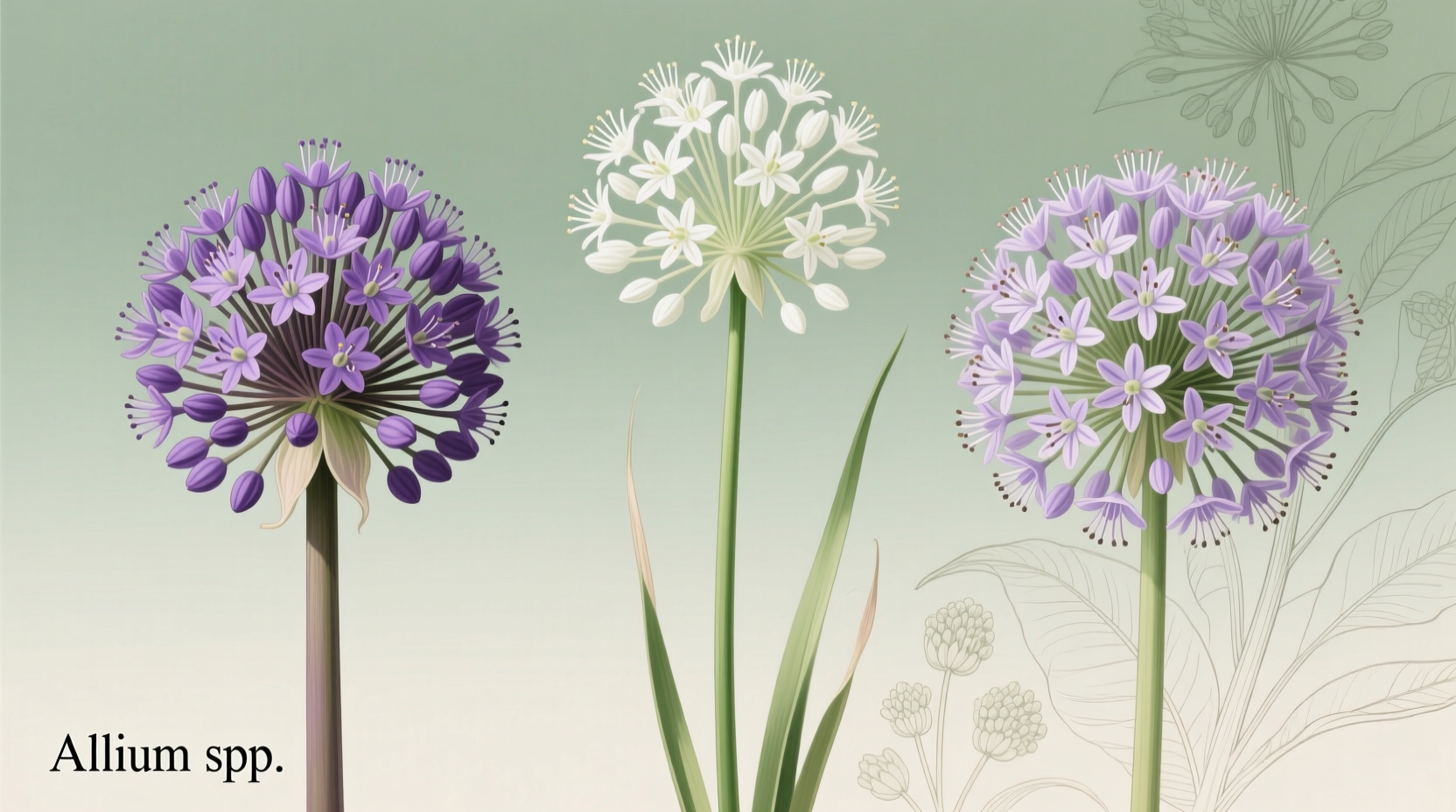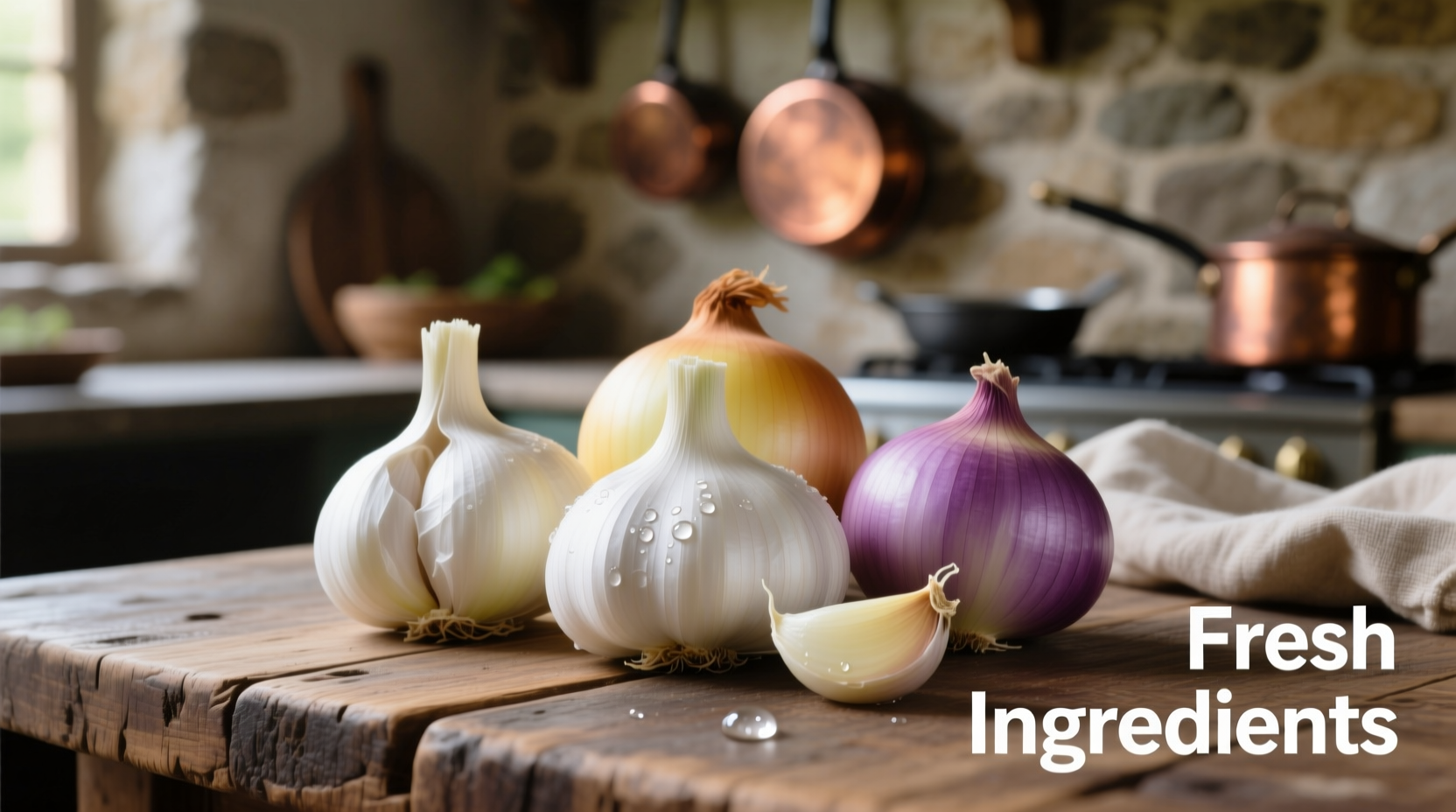Your Complete Guide to Allium Varieties: Flavor Science and Practical Kitchen Applications
When selecting between garlic, onions, and shallots, you're choosing different expressions of the same chemical compounds. All three contain sulfur-based compounds that create their distinctive flavors, but in varying concentrations that dramatically impact your cooking results.
| Allium Type | Primary Flavor Compounds | Flavor Profile | Best Culinary Applications |
|---|---|---|---|
| Garlic (Allium sativum) | Allicin (when crushed), diallyl disulfide | Sharp, pungent when raw; nutty, mellow when cooked | Sauces, marinades, roasted vegetables, meat rubs |
| Yellow Onion (Allium cepa) | Propanethial S-oxide (tear-inducing compound) | Sharp when raw; sweet, caramelized when cooked | Soups, stews, sautés, grilled dishes |
| Shallot (Allium cepa var. aggregatum) | Higher fructose content, different sulfur ratios | Delicate, sweet-onion flavor with subtle garlic notes | Vinaigrettes, delicate sauces, raw applications, French cuisine |
Shopping Smart: Selecting the Best Specimens
Professional chefs evaluate alliums using three critical criteria that home cooks often overlook. First, check for firmness - soft spots indicate aging or moisture loss. Second, examine the skin texture; papery, dry skins without blemishes signal freshness. Third, assess weight relative to size - heavier specimens contain more moisture and flavor compounds.
According to research published by the USDA Agricultural Research Service, shallots contain approximately 8-12% fructose compared to onions' 4-6%, explaining their naturally sweeter profile. This scientific insight helps explain why shallots work better in raw applications like vinaigrettes where onion's sharper bite would dominate.

Cooking Applications: When to Use Each Allium
Your choice between garlic, onions, and shallots should align with your cooking method and desired flavor profile. Consider these professional chef guidelines:
Raw Applications
Shallots shine when used raw, providing complex flavor without overwhelming heat. Their milder profile makes them ideal for vinaigrettes, salsas, and garnishes. Onions work well in robust applications like pico de gallo, while raw garlic should be used sparingly as its intense flavor can dominate.
Sauteing and Caramelizing
For foundational flavors, yellow onions develop the deepest caramelization due to their higher sugar content. Shallots caramelize faster but burn more easily - reduce heat by 25% when cooking them. Garlic requires the shortest cooking time; add it after onions have softened to prevent bitterness.
Long-Simmered Dishes
In soups, stews, and braises, yellow onions provide the most stable flavor foundation. Their robust structure holds up during extended cooking. Shallots break down more quickly, making them better for shorter-cooked sauces. Garlic benefits from being added at multiple stages - some early for depth, some late for freshness.
Substitution Guide: Making Smart Swaps
Understanding substitution ratios prevents flavor disasters. The University of Minnesota Extension confirms that alliums contain varying concentrations of flavor compounds, requiring careful adjustment when substituting:
- Shallots for onions: Use 1.5 shallots for every 1 small onion (they're less dense)
- Onions for shallots: Use 3/4 onion for every 1 shallot, plus a pinch of garlic powder
- Garlic for shallots: Use 1 clove garlic per 2 shallots, but add sweetness with honey or sugar
- Shallots for garlic: Not recommended - they lack sufficient pungency for garlic-forward dishes
Remember that substitution success depends on your cooking method. In raw applications, shallots can replace onions directly, but in cooked dishes requiring deep flavor development, onions provide more complexity.
Storage Secrets for Maximum Freshness
Proper storage preserves flavor compounds and extends shelf life. Keep these science-backed tips in mind:
- Store whole garlic, onions, and shallots in a cool, dark, well-ventilated space (not the refrigerator)
- Never store alliums near potatoes - ethylene gas from potatoes accelerates sprouting
- Refrigerate cut alliums in airtight containers for up to 10 days
- Freeze minced garlic in oil for up to 6 months (onions and shallots lose texture when frozen)
Common Mistakes to Avoid
Even experienced cooks make these allium errors:
- Adding garlic too early: Garlic burns at lower temperatures than onions - add it after onions have softened
- Using the wrong variety: Red onions work for salads but lack cooking depth; yellow onions provide the best all-purpose cooking flavor
- Not adjusting for size: Large shallots can be twice as strong as small ones - taste as you go
- Over-substituting: Shallots can't replicate garlic's pungency in garlic-forward dishes like aioli











 浙公网安备
33010002000092号
浙公网安备
33010002000092号 浙B2-20120091-4
浙B2-20120091-4